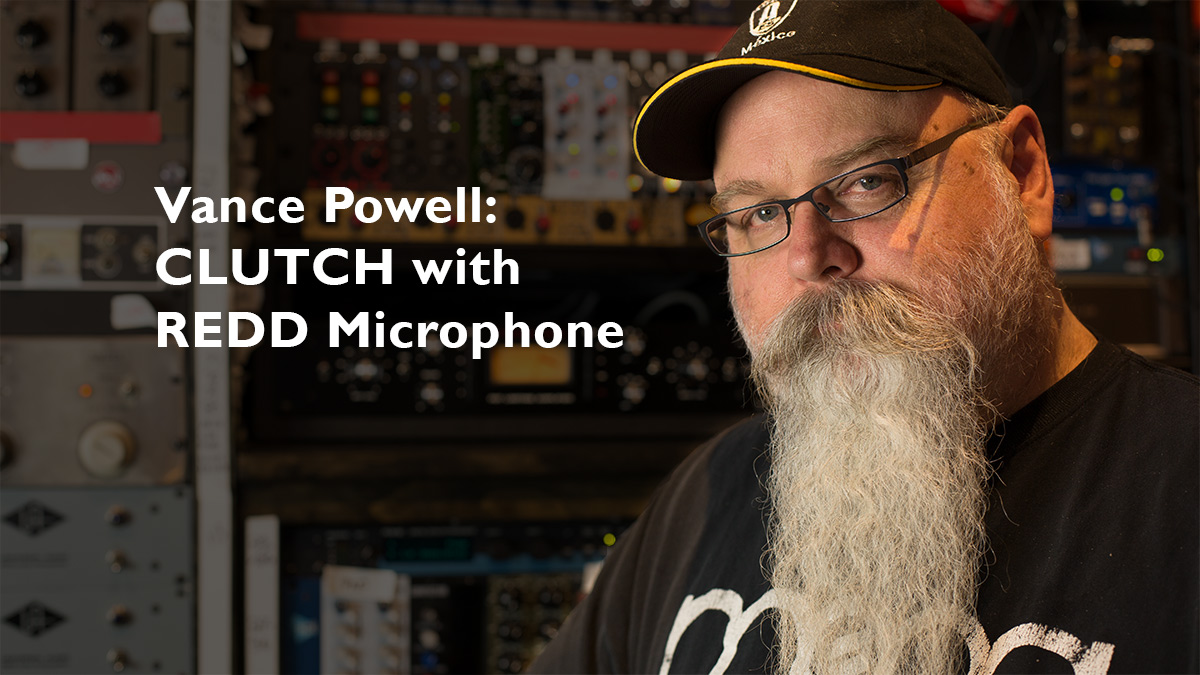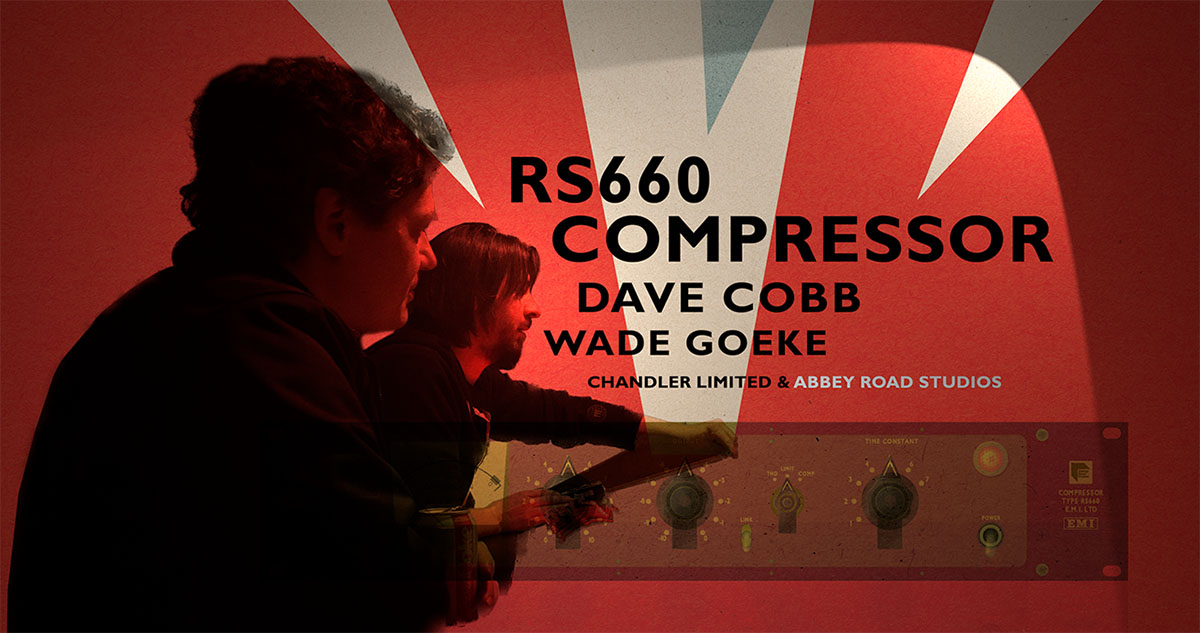Germanium Compressor
by: Mike Caffrey, www.monsterisland.com
TapeOp, Issue #61 – Sep/Oct. 2007
The Chandler Germanium Compressor is yet another amazing piece from designer Wade Goeke, and “Chandler Germanium” continues to be synonymous with innovation. The Germanium Compressor is unlike any compressor I’ve ever used and is arguably his best design yet. It will probably be the beginning of its own genre of compressors.
Developed over two years, more by ear and practical use than through theory, the Germanium Compressor is a fundamentally normal compressor, with some non-fundamental controls that I think of as “anti-compression” controls. Previous Wade Goeke designs, like the TG-1 and Zener Limiter, are known for their ability to make blatant, crushing compression sounds that would never be mistaken for subtle leveling. While the Germanium Compressor can do that fast-attack / fast-release style of explosive compression, its design features allow a type of artifact-free compression that can’t typically be done with other commercially available compressors.
Starting with the basics, it’s a single channel, 1RU-height, FET compressor, which puts it in the category of the classic 1176. It has an input style threshold control, like the 1176, where you bring the level up to the threshold to get more compression. It has continuously-variable attack and release controls, and has the same output make-up amplifier as seen on the rest of the Germanium line. The Feedback control is continuously variable and the Gain is detented in 3 db increments. When combined, they are capable of a +25 dBu output level. While the Feedback control functions like a master output level control, it’s actually changing the level of the negative feedback sent to the amp’s input stage, affecting output level, THD, and frequency response. Varying the combined settings of Gain and Feedback will change both tone and texture. Some settings will create boosts in the lows, others will increase clarity in the high end and how clean the tone is. 20-30 minutes of experimentation should make it apparent how they interact, and it’s well explained in the manual.
The attack and release controls range from “fast” to “slow.” That’s how they’re labeled and how they sound. The manual explains that the attack times can be quite fast, but more importantly, very slow. This is great for making drums and other sounds very punchy. The manual says they have never calculated the attack times, in an attempt to keep them musical and natural, which they are. But, I suspect it’s to prevent knockoffs and clones, as this is bound to be a successful piece and a couple of other Chandler designs have been pretty egregiously cloned in the past (comically, in one case, including a wiring error in the power supply that was shipped by accident).
As we get into the Germanium Compressor’s less common controls, the first one that comes up is the Dirty Comp switch. The Clean setting has circuitry to reduce distortion that’s typical of FET compressors. Choosing the Dirty option removes this distortion reduction. In most cases I choose the Clean setting. The Ratio control is pretty standard (the actual ratios are not labeled), but the Curve control is pretty unusual. It’s responsible for controlling the knee of the compressor, which is how the compressor “grabs” the signal as it’s compressing. The Ratio and Curve interact to determine how much the signal is compressed, and it’s very unusual to have control over both in a hardware compressor. The Ratio is responsible for how much compression happens when the signal is above the threshold. The Curve (or knee) is responsible for the onset of the compression, which sounds a little like attack time, but it’s different. This may take a moment to digest; attack time is the length of time it takes between the crossing of the threshold and the beginning of the gain reduction. Knee is the length of time between the beginning of the attack and reaching the full gain reduction called for by the compressor’s detector. In short, attack time is when the attack begins and knee is how long the attack takes. The knee is controlled through varying the resistance with six different combinations of germanium, silicon, and zener diodes. They each have their own characteristics and range from a gentle germanium resistance, through the harder silicon, to the hardest which is the zener. This translates to a lot of control over the nature and amount of compression. Or, you can just grab both knobs and twist them until it sounds good. The lack of labels could easily be seen as a flaw, or could be seen as pushing you to use the compressor by ear, which is really what you should be doing with all compressors.
This brings us to the last two controls which I’ve dubbed “anti-compression:” The Sidechain; and what the manual calls the “most surprising and effective feature,” the Wet/Dry Mix. The Sidechain is the same as the one Wade put on the Zener compressor. It’s a high-pass filter on the signal sent to the compressor’s detector, which engaged, will make it less sensitive to low frequencies that often make compressors clamp down when you don’t want them to. Signals with a wider frequency range, a drum subgroup or a guitar for example, may benefit from this as it will make the compression more uniform throughout the frequency range. For instance, a kick that sounds like it’s the same volume as the snare in a subgroup will probably cause more compression than the snare will. Suppose you need a 3 db on each. If you set the compressor for 3 db on the snare, you may get 6-8 db on the kick. Engaging the Sidechain at 60 or 90 Hz will prevent the detector from reacting to low-end information below that frequency, and your gain reduction will be more uniform. (The options are bypassed, 30, 60, 90, 150 and 300 Hz.) This could help on a low E-string of a bass or guitar, or a guitar subgroup with big, low electrics and higher, lighter acoustics. What would have been too much compression, is now right. Thus, “anti-compression”.
The next “anti-compression” control is the Wet/Dry mix and is what really sets this compressor apart. It’s a continuously-variable control that goes from a 100% compression signal when fully counterclockwise, to 50/50 at 12 o’clock, to 100% uncompressed when fully clockwise. The easiest place to hear overcompression errors is in the attack. You can also hear it during transitions from one section of a song to another where you’d expect to hear dynamic change, but the compressor stops it, and it sounds like you’re hitting a ceiling. The “anti-compression” affect of the mix knob solves both of these problems really well. Turning the knob to about 9 o’clock lets enough of the uncompressed signal through that you don’t hear overcompression artifacts on the attack. A little more, in the 11 o’clock range, and your drum subgroup will never hit the ceiling. Enough of the uncompressed signal passes through that you can maintain natural-sounding dynamics. When I first tried it out, I was very impressed with myself and what a great sound I had gotten. Then I realized that with the Wet/Dry mix, anyone can get a great sound and still maintain dynamics. This also simplifies the two-stage compression routing technique that I demoed at TapeOpCon earlier this year. I like to have compressed and uncompressed signals summed and sent to a second compressor that I treat as the main compressor. The Germanium Compressor is perfectly suited for two-stage compression because it can be done simply by daisy-chaining it in front of a second compressor rather than a complicated bus-routing method, and it will get the same results.
So how does it sound? Great, as Chandler gear always does. One of the options with the Wet/Dry control is running a signal through without any compression (like the TG-1 and Zener THD mode). That makes it very easy to hear the tonal characteristics of the circuitry. Its inherent sonic quality is a very open sound. The nature of the highs and mids give it sort of a “crystal clarity”. It’s not going to darken and thicken an anemic source, but it can make a sound big and punchy. I found the Drive control seems to add more low end than Feedback. With a drive of 7, it sounded to me like there was a little shelving boost around 40 Hz and also around 12 kHz. It feels like there’s a gentle dip with a medium to wide Q at around 400-450 Hz. Reducing the drive, there’s less of a 40 Hz bump. Also, increasing the threshold past 9 at the front of the signal path added a bit of grit. There’s actually quite a bit of sonic manipulation you can do, even without any gain reduction.
As far as the sound of the compression with just the wet signal, I kind of don’t care. To me, this compressor is about the sound of the “anti-compression” controls. My use of the Sidechain feature varied, but I always mix in some of the dry signal. That’s what sets this compressor apart. So, when I reach for it, that’s what I’m looking for. You get the Germanium tone, and great control over the dynamics, but with a sound that’s completely clear of compression artifacts. I’ve also taken to always using it in front of another compressor. Using it this way translates to having control over the low dynamic sections and the second compressor control over the high dynamic sections. The wet signal gets compressed twice, but the dry signal only gets compressed by the second compressor. So if you mix the dry signal right, it will be masked by the wet signal during a quiet section, but then it will mask wet signal in the loud sections. The dry signal can only be limited by the second compressor in the chain.
The Chandler Germanium Compressor is a great sounding compressor. I was happy recording with it on drums, bass, electric guitars, acoustic guitars, tuba, trombone, alto sax, tenor sax, and vocals. For mixing, my first choice is to use one pair as part of a two-stage subgroup on drums and a second pair set up the same way on guitars. I got great sounds when trying it on the stereo bus and also during mastering. For me, this seemingly universal effectiveness is a direct result of the Wet/Dry control. The addition of a couple of unique, easy to use controls, has put it in its own class. I think the Germanium Compressor’s simplicity and effectiveness will immediately increase any engineer’s compression skill level (I hope it doesn’t put more engineers out of work!), and this is why I think it’s likely to be the first of its own genre of compressors.
—Mike Caffrey






